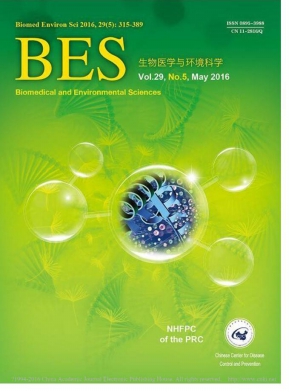The Status and Associated Factors of Successful Aging among Older Adults Residing in Longevity Areas in China
doi: 10.3967/bes2016.045
-
Key words:
- Successful aging /
- Older adults /
- Evaluation /
- Associated factors
Abstract: ObjectiveThis study aims to assess the status of successful aging (SA) in longevity areas in Chinaand explore multiple factors associated with SA among the young-old and oldest-old.
MethodsA total of 2296 elderly people aged 65 and older were interviewed in the longevity areas sub-sample of the Chinese Longitudinal Healthy Longevity Survey (CLHLS) in 2012. Baseline assessments included a researcher-administered questionnaire, physical examination, and laboratory testing. A logistic regression model was used to identify factors associated with SA.
ResultsThe prevalenceof SA was 38.81% in the CLHLS in 2012. There were significant differences between ages groups, with SA compromising 56.85%among≥65 years group and 20.31% among ≥100 years group (χ2trend=126.73,P<0.01). The prevalence of SA among females was 33.59%, which was significantly lower than that among males (45.58%) (χ2gender=33.65,P<0.05). In the regression analysis, having anemia (OR=0.744, 95% CI: 0.609-0.910), poor lifestyle (OR=0.697, 95% CI: 0.568-0.854), poor sleep quality (OR=0.558, 95% CI: 0.456-0.682), and central obesity (OR=0.684, 95% CI: 0.556-0.841) were the main factors associated with SA. The promoting SA rate decreased as age increased, and the group of 65-79 years had higher odds than the other age group.
ConclusionPreventing central obesity, improving sleep quality and promoting healthy lifestyle may contribute to achieve SA among the elderly.
| Citation: | SHI Wen Hui, ZHANG Hong Yan, ZHANG Juan, LYU Yue Bin, Melanie Sereny Brasher, YIN Zhao Xue, LUO Jie Si, HU Dong Sheng, FEN Lei, andSHI Xiao Ming. The Status and Associated Factors of Successful Aging among Older Adults Residing in Longevity Areas in China[J]. Biomedical and Environmental Sciences, 2016, 29(5): 347-355. doi: 10.3967/bes2016.045 |







 Quick Links
Quick Links
 DownLoad:
DownLoad: